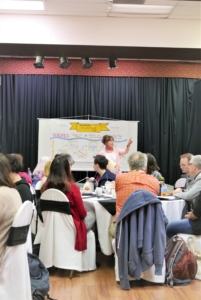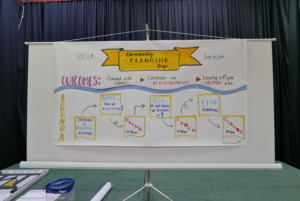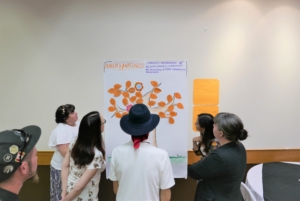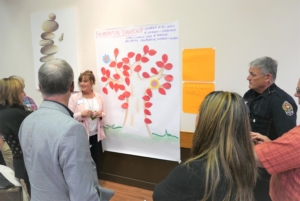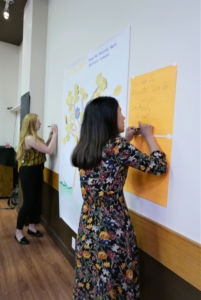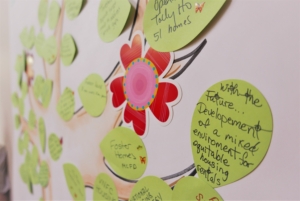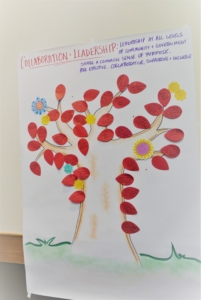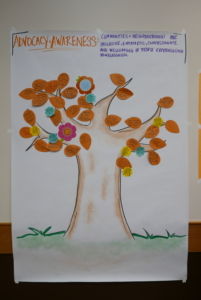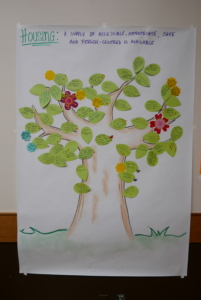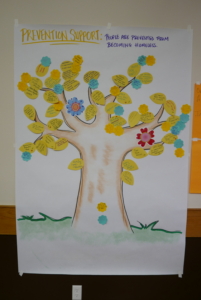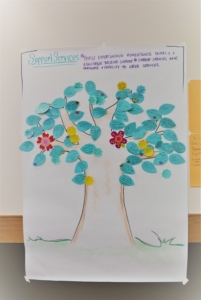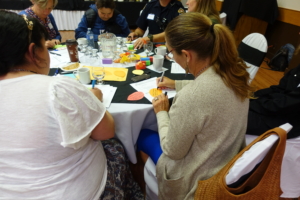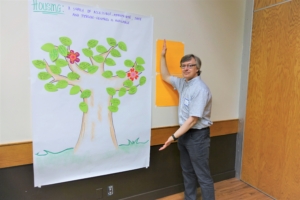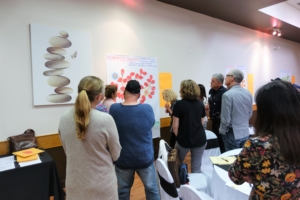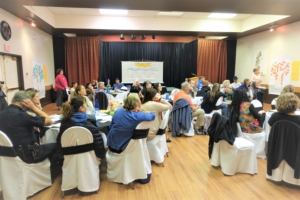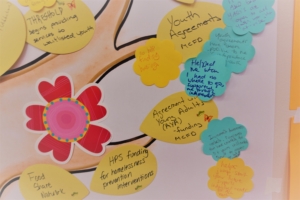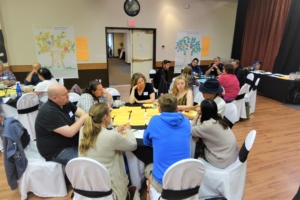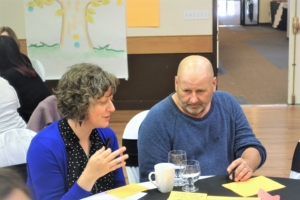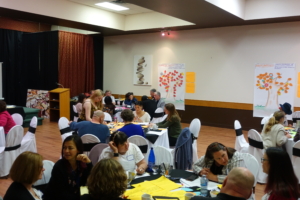The AEHCR Ceased Operations September 30, 2025
Together we will make a difference.
Reaching Home Canada’s Homelessness Strategy
Reaching Home: Canada’s Homelessness Strategy is a community-based program aimed at reducing and preventing homelessness. Officially launched April 1, 2019, the redesigned federal homelessness program is a continuation of the Homelessness Partnering Strategy, and will support the most vulnerable people in the Capital Region by improving access to safe, stable and affordable housing. Employment and Social Development Canada has awarded Reaching Home funding to the CRD to administer Reaching Home in the Greater Victoria community.
From 2019-2024, the CRD is administering a five-year agreement under the Designated Communities Program for $4.7 million, and a three-year agreement under the Indigenous Homelessness Program for approximately $1 million. Both programs will continue to fund services that support the needs of those experiencing homelessness in the region.
Community Plan to End Homelessness
Funding for the five-year Designated Communities funding stream will be allocated to initiatives that address outcomes identified in the 2019-2024 Community Plan To End Homelessness, and are recommended by the Reaching Home Community Advisory Board (CAB). Currently the AEHCR is the CAB for Designated and Indigenous funding streams.
Funding for the Indigenous Homelessness Program is currently supporting the delivery of holistic and culturally-appropriate responses to the unique needs of Indigenous People who are homeless or at risk of homelessness. The Government of Canada is currently consulting with Indigenous stakeholders to determine the governance and administration to support the future delivery of this program. While this is underway, and to ensure continuation of this funding, the Government of Canada extended its agreement with the CRD to support the CRD remaining as the administrator of this funding for the year 2021-22. Allocations have been determined under the Indigenous Homelessness Program for 2021-22.
Frequently Asked Questions
REACHING HOME: CANADA’S HOMELESSNESS STRATEGY
1. What is Reaching Home: Canada’s Homelessness Strategy?
- Reaching Home: Canada’s Homelessness Strategy is the redesigned federal homelessness program which will officially start on April 1, 2019.
- The Government of Canada launched in 2017 Canada’s first ever National Housing Strategy, a 10-year, $40-billion plan that will give more Canadians a place to call home.
- As part of the Strategy, the Government will invest $2.2 billion over 10 years to tackle homelessness, building on Budget 2016 funding of $111.8 million over two years (2016-17 and 2017-18).
- Reaching Home supports the goals of the National Housing Strategy, particularly to support the need of the most vulnerable Canadians; to improve access to safe, stable, and affordable housing; and to reduce chronic homelessness nationally by 50 percent by 2027-28.
- Highlights of the redesigned Reaching Home program include:
- Expanding the program’s reach
– The Government will expand the program’s reach to up to six new Designated Communities. New communities will be added through an application process, which closed on March 8, 2019. This expansion will not affect the funding received by the existing Designated Communities. - More flexibility for communities under an outcomes-based approach
– Reaching Home will introduce greater flexibility in how funding can be used. For example, while Housing First is a proven approach endorsed by the Government of Canada, Housing First investment targets for communities that have them will be removed. Reaching Home will provide more flexibility and focus on supporting communities in achieving community-wide outcomes, including the national goal of reducing chronic homelessness by 50 percent by 2027-2028. - Introduction of Coordinated Access
– Coordinated Access will help communities shift towards a more coordinated and systems-based approach to addressing homelessness. To support this transformation, federal funding will be provided to communities to help them implement Coordinated Access, including the adoption of the necessary information technology infrastructure. - Addressing Indigenous homelessness
– The Government of Canada recognizes the need to address the overrepresentation of Indigenous Peoples among the homelessness population.
– Building on the investments made in Budget 2016 to address Indigenous homelessness, dedicated investments will be increased under Reaching Home.
– Current funding available under the Aboriginal Homelessness stream, to be recast as the Indigenous Homelessness stream, will be maintained and will
continue to support the delivery of holistic and culturally-appropriate responses to the unique needs of Indigenous Peoples living in vulnerable conditions, including Indigenous women, youth and mothers with children.
– The Government of Canada is engaging with National Indigenous Organizations and Indigenous service providers to develop an approach for allocating the
additional funding to prevent and reduce Indigenous homelessness.
- Expanding the program’s reach
2. Will Housing First investment targets be maintained under Reaching Home?
- Under Reaching Home, the Housing First approach will continue to be supported as it is a proven approach to tackling homelessness, including chronic homelessness, which remains an important priority.
- However, as of April 1, 2019, all mandatory Housing First investment targets will be removed. Communities will now have the flexibility to utilize the Housing First approach for populations beyond those experiencing chronic homelessness and to use other innovative approaches to address local needs.
3. Who will be required to complete a Community Plan?
- All Designated Communities will be required to have a community plan in place that covers the five years of the contribution agreement with Reaching Home (2019-20 through to 2023-24).
- Community Entities responsible for delivering the Indigenous Homelessness stream, will be required to submit an investment plan to outline their investment priorities supported through Reaching Home over the full program cycle. Although, not required, they will also be encouraged to develop a full community plan.
- In communities where the Designated Communities and Indigenous Homelessness streams co-exist, cross-stream collaboration in the development of the plan is expected to foster inclusive planning and priority setting and better align investments.
- Community Entities under the Territorial Homelessness stream, at a minimum, will be required to submit an investment plan. If the Community Entity in the territories chooses to implement coordinated access, it will be required to complete a full community plan and publicly reporting on outcomes through the annual Community Progress Report.
4. What are the requirements for the new Community Plans under Reaching Home?
- Communities will be required to include:
- An investment plan for funding received through Reaching Home categorized by the five activity areas identified by Reaching Home
- Community contributions to demonstrate that the community has leveraged funding from other partners to match the Designated Community allocation;
- A description of the coordinated access system in place (if applicable) or strategy to implement coordinated access, including proposed governance of the system;
- The additional outcomes that a community expects to report on through Community Progress Reports;
- Details on the stakeholders that were consulted during the development of the community plan including Indigenous service providers and other community
organizations, as well as the Indigenous Community Entity where the Indigenous Homelessness and Designated Communities streams co-exist; and, - Measures to ensure that appropriate services and supports are available in both official languages to meet the needs of Official Language Minority Communities (OLMCs).
- Communities will be required to ensure that their community plan is informed by community-wide stakeholder engagement and is approved by their Community Advisory Board.
- In the capital region, the Reaching Home Community Plan will be based on the vision, priorities, goals and objectives of the broader community plan developed through partnerships within the AEHCR and the Aboriginal Coalition to End Homelessness.
5. What is the timeline for completion of Community Plans?
- Community plans are expected to be finalized by October 1, 2019.
6. What is a coordinated access system?
- A coordinated access system is the process by which individuals and families who are experiencing homelessness or at-risk of homelessness are directed to community-level access points. At these access points, trained workers will use a common assessment tool to evaluate the individual or family’s depth of need, prioritize them for housing support services, and then help to match them to available housing focused interventions.
- Assessment of an individual’s or family’s level of need allows each housing intervention to match the level of support that an individual or family may need to resolve their homelessness.
- Quality coordinated access systems share several features, including a centralized database with real-time data about system users; a centralized database with real-time data on available housing and supports; clear access points; common assessment; consistently applied protocols; and resources focused on ensuring that people can connect with the programs they need and want as efficiently as possible.
7. What are the requirements related to coordinated access under Reaching Home?
- Communities receiving funding through the Designated Communities funding stream will be required to have a coordinated access system in place by March 31, 2022.
- Communities receiving funding through the Indigenous Homelessness streams are not required to implement coordinated access.
- There will be a set of minimum requirements for coordinated access across all communities that receive Designated Communities funding as well as territories who
choose to implement coordinated access. - The minimum requirements for coordinated access will address several aspects of the system, including coverage, access, assessment, prioritization, matching and referrals and the use of a Homelessness Management Information System (HMIS) platform.
- In collaboration with local key partners, service providers, funders and people with lived experience, communities will design a coordinated access system to meet their priorities and outcomes.
- In communities where the Indigenous Homelessness and Designated Communities streams co-exist, Community Entities under both streams are expected to work in partnership on the design and implementation of coordinated access.
- Communities will receive supplemental funding to support the coordinated access system implementation through the new Community Capacity and Innovation (CCI) funding stream.
- In the capital region, the CRD, BC Housing and Island Health are working with local housing services and programs to create a Coordinated Assessment and Access (CAA) system that meets local needs and aligns with the BC Housing provincial system.
8. How much time will communities get to meet Reaching Home’s new requirements?
- Communities will have until March 31, 2022 to implement a coordinated access system that meets Reaching Home’s minimum requirements as outlined in the Directive on Coordinated Access.
9. What does the outcomes-based approach mean in practice?
- Reaching Home will adopt an outcomes-based approach where communities have more flexibility to allocate funds to better meet local needs and priorities while working towards agreed-upon community-level outcomes.
- In practice, communities will have more flexibility to meet the needs of a diverse range of individuals, beyond those who are chronically homeless, such as youth, veterans and women fleeing violence.
- Reaching Home will establish core outcomes and indicators on which communities will report publicly once they have a By-Name List in place. Communities will also be able to establish additional outcomes and indicators based on their priorities.
- With the exception of a reduction of 50% in chronic homelessness by 2027-28, communities will set their own targets for each core outcome.
- Further details on the required outcomes will be communicated in spring 2019.
10. What funding is available through the Indigenous Homelessness stream to assist Indigenous people who are at-risk or experiencing homelessness?
- Budget 2016 doubled investments in the Aboriginal Homelessness stream, increasing direct funding to communities towards the delivery of culturally-appropriate services for Indigenous people who are at-risk of or experiencing homelessness in urban centres and outside the territories.
- Under Reaching Home, this stream will be maintained and renamed the Indigenous Homelessness stream. As before, Indigenous individuals and families may also be served by projects funded through other Reaching Home funding streams.
- In addition to the Indigenous Homelessness stream, the Government will also introduce new funding under Reaching Home for Indigenous homelessness investments. Work is underway in collaboration with National Indigenous Organizations and Indigenous service providers to develop an approach to allocate this additional funding to support initiatives that better respond to the unique needs of First Nations, Inuit, and Métis individuals experiencing or at risk of experiencing homelessness.
- Further details on funding will be made available over the coming months.
- The CRD has entered into a one year agreement to administer the Indigenous Communities funding stream. The Government of Canada is currently undertaking a consultation with Indigenous community stakeholders to determine their future Community Entity and Community Advisory Board relationships.
11. Which communities are required to implement the Homeless Individuals and Families Information System (HIFIS)?
- Under Reaching Home, HIFIS will be mandatory for Designated Communities that do not have an existing Homeless Management Information System.
- Community Entities are responsible for HIFIS implementation and will have three years to implement it.
- The CRD is working with BC Housing to integrate Reaching Home funded programs
into the provincial HIFIS.
12. What will be the requirements for results reporting under Reaching Home?
- Under Reaching Home, communities will be required to complete two types of results reporting annually.
Community Planning Day June 5, 2019 Photo Gallery
